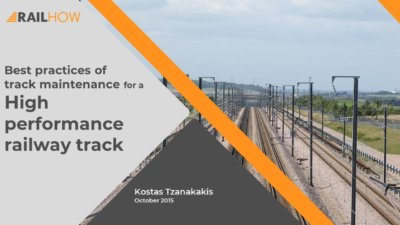By Kostas Tzanakakis, Senior Railway Expert
This presentation has been delivered at a Workshop at the “Rail Engineering & Maintenance Summit” on 27/10/2015 in Singapore
Trains have to run on time, and a basic condition is that the quality of the track and other infrastructure objects is sufficient. Most of the physical systems and their components degrade/fail over time. The aim of the IM is to design, construct and maintain an expensive asset, as it is the railway track, in a cost-effective way, to assure its high performance during its service life. The only way to achieve this target is included in the word “Quality”. But how does the quality affect the track costs and the service life of the track? If the Infrastructure Manager can achieve to get a new track of high quality, to maintain it with the optimum maintenance strategies, he will be able to manage a track with low costs and high efficiency.
This presentation provides the necessary functional knowledge of the track behaviour, covering the function of the various track components, their interaction as elements of the track system, and the interaction of the systems track and railway vehicles. It also presents important tools and future challenges for infrastructure managers.

